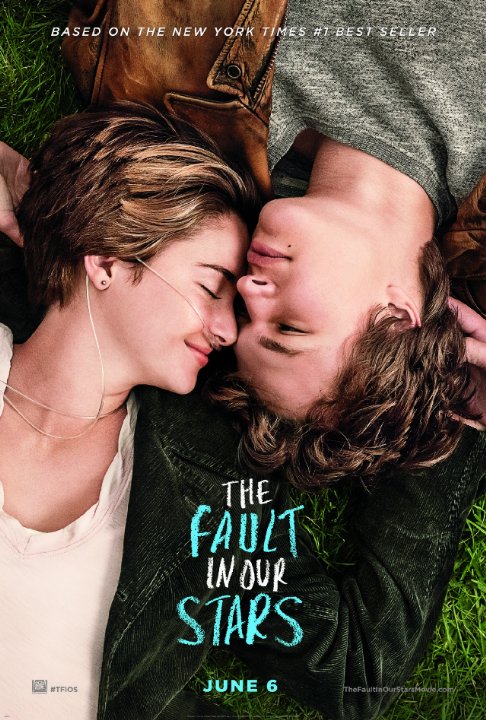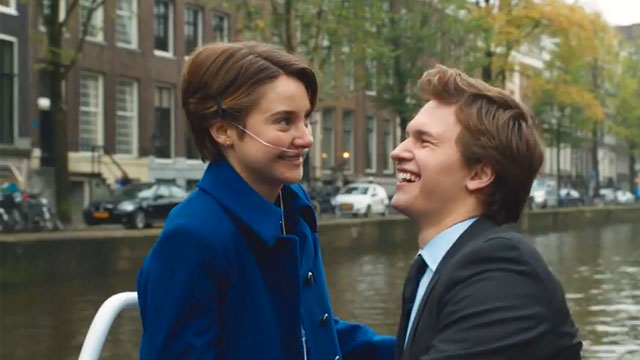 Before reading the book “The Fault in Our Stars” by John Green, I had almost no interest in the movie. Watch a terminally ill girl struggle with cancer? Sounds too depressing. Yet, as soon as I picked up the book, I couldn’t put it down. It is written in such an engaging way, with lifelike characters, vivid imagery, insightful dialogue, and even a great deal of humor, despite the unpleasant premise. The movie version almost perfectly captures this essence, and although I would give a slight edge to the novel, it is a close call.
Before reading the book “The Fault in Our Stars” by John Green, I had almost no interest in the movie. Watch a terminally ill girl struggle with cancer? Sounds too depressing. Yet, as soon as I picked up the book, I couldn’t put it down. It is written in such an engaging way, with lifelike characters, vivid imagery, insightful dialogue, and even a great deal of humor, despite the unpleasant premise. The movie version almost perfectly captures this essence, and although I would give a slight edge to the novel, it is a close call.
Hazel Grace Lancaster (Shailene Woodley) is a not-so-typical teenager, who has been in and out of hospitals for much of her adult life, due to being diagnosed with cancer when she was just 13 years old. Miraculously, she has lived with it for years, although her time is still limited. One day, she bumps into Augustus Waters (Ansel Elgort) at a cancer support group. His rambunctious, outgoing personality at first intrigues her, yet she is hesitant to pursue a relationship, since, as she mentions, she is a “grenade” who will one day “obliterate everything in her wake.”
But, as Augustus says: “You don’t get to choose if you get hurt in this world…but you do have some say in who hurts you.” What distinguishes “The Fault in Our Stars” from other tragic love stories is that it is easily accessible, and not overly sappy as some of them tend to be. It is presented through the eyes of a 16-year-old girl, so it is likely that this age group will have the strongest reaction from it. But, with the help of Shailene Woodley’s performance, the film is easy for audiences of almost any age to identify with. As a teenager diagnosed with terminal cancer, Hazel Grace is much older than she seems, and she never allows people to feel sorry for her. She knows that her days are numbered, but she keeps trucking on. Woodley, who just starred in the adaptation of “Divergent,” here presents a much more heartfelt and mature performance. I wouldn’t be surprised to see her name come up when it’s time for award season.
There are a few differences between “The Fault in Our Stars” book versus the movie, such as omitting certain characters, or cutting scenes and lines of dialogue. But the basic premise is there: Hazel meets Augustus, and tries to restrain herself from getting close to him, but she eventually realizes that she has to take advantage of and enjoy her time while she still has it. There is almost all of the humor here too, including a scene that plays almost straight from the novel, when Gus and Hazel meet up with their favorite novelist named Peter Van Houten (Willem Dafoe, who is perfect), and realize that he is not quite the image of grandeur that they had hoped.
But there are also the sad moments, such as when Hazel, with her weak lungs and oxygen tank, struggles to climb a long flight of stairs. Or the scene when she wakes up in aching pain and has to be rushed to the emergency room. And, of course, there is the tragic ending, which, as you might imagine, is one hell of a tearjerker. Let’s just put it this way: even people who think that they are immune to being sad from movies (myself included) may suddenly find that they have something in their eye. And if you can convert an entire audience into a sea of tears, that, to me, is a noteworthy accomplishment.

2:21 am on June 11th, 2014 1
Thanks for the thoughtful review one beautiful and poignant YA storiey….XOXO John Green I haven’t seen the movie, but I will go now and thank you for not spoiling….for those who haven’t read it….
3:15 am on June 11th, 2014 2
Thank you! It was a very good adaptation, a little different from the book at times but not too much. And the performances were very convincing.
6:14 pm on June 11th, 2014 3
David!! I can’t believe you have the fault in our stars the same rating as the edge of tomorrow!! Shame on you! However, As always, great review! I Look forward to reading the next one.
3:54 am on June 12th, 2014 4
Thanks! I would have to say that I enjoyed the two movies about the same, although in different ways. They are both great movies, depending on what type of mood you’re in.